Xiaomi Redmi Note 8 Pro
$195 | 17549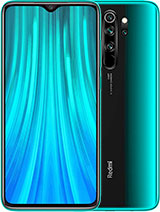
- 6.53" 1080x2340 pixels
- 64MP 2160p
- 6/8GB RAM Helio G90T
- 4500mAh Li-Po
Phone Finder
- Acer alcatel Allview Amazon Amoi Apple Archos Asus AT&T Benefon BenQ BenQ-Siemens Bird BlackBerry Blackview BLU Bosch BQ Casio Cat Celkon Chea Coolpad Cubot Dell Doogee Emporia Energizer Ericsson Eten Fairphone Fujitsu Siemens Garmin-Asus Gigabyte Gionee Google Haier HMD Honor HP HTC Huawei i-mate i-mobile Icemobile Infinix Innostream iNQ Intex itel Jolla Karbonn Kyocera Lava LeEco Lenovo LG Maxon Maxwest Meizu Micromax Microsoft Mitac Mitsubishi Modu Motorola MWg NEC Neonode NIU Nokia Nothing Nvidia O2 OnePlus Oppo Orange Oscal Oukitel Palm Panasonic Pantech Parla Philips Plum Posh Prestigio QMobile Qtek Razer Realme Sagem Samsung Sendo Sewon Sharp Siemens Sonim Sony Sony Ericsson Spice T-Mobile TCL Tecno Tel.Me. Telit Thuraya Toshiba Ulefone Umidigi Unnecto Vertu verykool vivo VK Mobile Vodafone Wiko WND XCute Xiaomi XOLO Yezz Yota YU ZTE
Xiaomi Redmi Note 8 Pro Summary
Succeeding the Redmi Note 7 Pro that has made a solid standing in the mid-range segment with a 48MP camera using Sony IMX586 sensor and a powerful Snapdragon 675 processor at the time. With the Redmi Note 8 Pro, Xiaomi continues to create a higher challenge for rivals when equipping this product with a powerful Helio G90T gaming processor, 64MP main camera, and a beefy 4,500 mAh battery, which is higher than standard.
Whether such upgrades are enough to make Redmi Note 8 Pro a prominent choice in the price range of sub Rs. 20,000 with the presence of formidable products such as Realme 5 Pro, Galaxy A50s, or Oppo A9?
Display
Redmi Note 8 Pro uses an IPS LCD screen with a waterdrop notch at the top. The screen is sized at 6.53 inches, has Full-HD + resolution, 19.5:9 aspect ratio, Gorilla Glass 5 protection, and HDR support, which is a rare feature at this price range.
The screen of this phone has high brightness, enough for using the phone outdoors. Similar to Samsung devices, you can utilize the automatic brightness adjustment mode to push to a higher level than the maximum brightness in manual mode. So when using in the sun, you should turn on the automatic mode to adjust the brightness.
The display quality is also very good, offering natural color, high contrast, and wide viewing angle. In particular, this screen supports HDR content, so watching HDR-enabled videos on YouTube is more vivid. In addition, the Redmi Note 8 Pro also has a dark mode, which can reduce eye strain when used at night.
Performance
In recent years, the Redmi Note series has been powered by Qualcomm processors. However, on the Redmi Note 8 Pro, Xiaomi switched to Mediatek chipset. The company confidently promotes the Helio G90T chip on the Redmi Note 8 Pro and sees it as a selling point. The Helio G90T has eight processing cores, including 2 high-performance Cortex-A76 cores clocked at 2.05Ghz and 6 power-efficient Cortex-A55 cores clocked at 2Ghz. The graphics chip inside Helio G90T is Mali-G76 3EEMC4 clocked at 800MHz with HyperEngine technology to improve the gaming experience.
On performance measurement apps, Helio G90T proves the overall power superior to the same-priced smartphones using the Snapdragon 712 (Realme 5 Pro) or Exynos 9610 (Galaxy A50s). In terms of graphics processing, which has not been a strength on Mediatek chips for a long time, G90T also scores significantly better than Qualcomm's mid-range Qualcomm Snapdragon 712 chip and outperforms the mid-range Exynos 9610 chip is used by Samsung on many A and M series smartphones of 2019. In practical experience, Helio G90T along with 6GB RAM proves that Xiaomi is not wrong when promoting this chip as a selling point.
As for gaming performance, the Redmi Note 8 Pro can handle heavy-graphics games available. Specifically with PUBG Mobile, the phone reached 39 fps with 92% frame stability when playing at the highest graphics settings. With this result, Helio G90T has slightly better gaming performance than Snapdragon 712 on Realme 5 Pro but still slightly inferior to Snapdragon 730 on Xiaomi Mi 9T.
Battery
The Redmi Note 8 Pro gets a 4,500 mAh battery and the Helio G90T chip on the 12nm process is quite energy efficient. In the familiar battery tests, this phone gives a decent usage time, enough to feel comfortable using the day with normal usage but still inferior to some 4,000 mAh smartphone using Qualcomm chip. That shows that the Helio G90T chip offers impressive performance but is not really optimal in terms of power saving.
In terms of charging time, this phone supports MediaTek's 18W Pump Express fast charging standard. Using the included charger, the total charge time for Redmi Note 8 Pro is 2 hours, of which the first 30 minutes charge 35% and 1 hour charge 70%. This charging result is similar to the charging time on phones using Qualcomm's Quick Charge 3 / 4.0 charging standard.
Camera
Redmi Note 8 Pro has up to 5 cameras including 4 rear cameras and one front camera. We should not be too overwhelmed by the number of cameras because the 2MP macro camera is not that useful. However, compared to the Redmi Note 7 Pro with only two rear cameras, it is clear that the camera on the Redmi Note 8 Pro is also an upgrade, the most notable of which is the addition of ultra-wide angle camera capable of autofocusing. Ultra wide-angle cameras on many smartphones of the same price range currently only support fixed focus, not capable of adjusting focus like Redmi Note 8 Pro
- Main camera: 64MP, f / 1.9, 0.8 micron pixel size, 1 / 1.7 inch, phase focus, Samsung ISOCELL GW1 sensor
- Wide-angle camera: 8MP, f / 2.2, 120 degrees, 1.12 microns pixel size, ¼ inch sensor
- Macro camera: 2MP, f / 2.4, 1.75 microns pixel size, 1/5 inch sensor.
- Depth camera: 2MP, f / 2.4, 1.75 microns pixel size, 1/5 inch sensor.
- Front camera: 20MP, f / 2.0, 0.9 micron pixel size
In terms of image quality, the 64MP main camera gives images with lots of detail, high contrast and colors that look quite natural. In low-light conditions, the HDR mode works effectively to balance between bright and dark areas in the image.
By default, the 64MP camera will take photos at 16MP resolution through a 4-pixel algorithm that combines them into one, but you can choose to shoot at 64MP resolution. However, the difference between the two image sizes is negligible, similar to the 48MP camera on the previous Redmi Note 7 Pro. Meanwhile, the image size in 64MP mode sometimes reach up to 15-16 MB in comparison to photos taken by 16MP mode with a size of only 4-7 MB.
Xiaomi Redmi Note 8 Pro Full Specifications
- Dollas $195 Buy in Flipkart >
- Rupee ₹17549 Buy in Flipkart >
- Technology GSM / HSPA / LTE
- 2G bands GSM 850 / 900 / 1800 / 1900 - SIM 1 & SIM 2
- 3G bands HSDPA 850 / 900 / 1900 / 2100
- 4G bands 1, 3, 5, 7, 8, 40, 41
- Speed HSPA 42.2/5.76 Mbps, LTE-A
- Announced 2019, August
- Status Available. Released 2019, September
- Dimensions 161.4 x 76.4 x 8.8 mm (6.35 x 3.01 x 0.35 in)
- Weight 200 g (7.05 oz)
- Build Glass front (Gorilla Glass 5), glass back (Gorilla Glass 5), plastic frame
- SIM Hybrid Dual SIM (Nano-SIM, dual stand-by)
- Type IPS LCD capacitive touchscreen, 16M colors
- Size 6.53 inches, 104.7 cm2 (~84.9% screen-to-body ratio)
- Resolution 1080 x 2340 pixels, 19.5:9 ratio (~395 ppi density)
- Protection Corning Gorilla Glass 5
- 500 nits max brightness (advertised) HDR
- OS Android 9.0 (Pie), upgradable to Android 10.0; MIUI 11
- Chipset Mediatek Helio G90T (12nm)
- CPU Octa-core (2x2.05 GHz Cortex-A76 & 6x2.0 GHz Cortex-A55)
- GPU Mali-G76 MC4
- Card slot microSDXC (uses shared SIM slot)
- Internal 64GB 6GB RAM, 128GB 6GB RAM, 128GB 8GB RAM, 256GB 8GB RAM
- UFS 2.1
- Modules 64 MP, f/1.9, 26mm (wide), 1/1.72", 0.8µm, PDAF 8 MP, f/2.2, 13mm (ultrawide), 1/4.0", 1.12µm 2 MP, f/2.4, (macro), 1/5.0", 1.75µm 2 MP, f/2.4, (depth)
- Features LED flash, HDR, panorama
- Video 2160p@30fps, 1080p@30/60/120fps, 720p@960fps, gyro-EIS
- Modules 20 MP, f/2.0, (wide), 1/3", 0.9µm
- Features HDR, panorama
- Video 1080p@30fps
- Loudspeaker Yes
- 3.5mm jack Yes
- WLAN Wi-Fi 802.11 a/b/g/n/ac, dual-band, Wi-Fi Direct, hotspot
- Bluetooth 5.0, A2DP, LE
- GPS Yes, with A-GPS, GLONASS, GALILEO, BDS
- NFC Yes
- Infrared port Yes
- Radio FM radio, recording
- USB 2.0, Type-C 1.0 reversible connector
- Sensors Fingerprint (rear-mounted), accelerometer, gyro, proximity, compass
- Non-removable Li-Po 4500 mAh battery
- Charging Fast charging 18W
- Colors Black, Red, Blue, White, Deep Sea Blue, Midnight Blue, Electric Blue, Twilight Orange
- Models 2015105, M1906G7I, M1906G7G
- SAR 1.15 W/kg (head) 1.18 W/kg (body)
- SAR EU 1.00 W/kg (head) 1.47 W/kg (body)
- Performance AnTuTu: 224759 (v7), 279355 (v8) GeekBench: 6999 (v4.4), 1622 (v5.1) GFXBench: 14fps (ES 3.1 onscreen)
- Display Contrast ratio: 1326:1 (nominal)
- Camera Photo
- Loudspeaker Voice 64dB / Noise 71dB / Ring 82dB
- Audio quality Noise -93.6dB / Crosstalk -91.9dB
- Battery life Endurance rating 114h
Xiaomi Redmi Note 8 Pro News
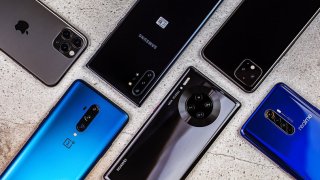
Mobile - Jul 16, 2020
Best Camera Phone Under 15,000 You Can Get In India: January 2020
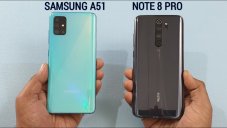
Mobile - Apr 29, 2020
Samsung Galaxy A51 vs Redmi Note 8 Pro: Redmi Again Offers Higher Value For Money
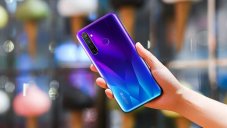
Review - Mar 24, 2020
Best Mobile For Playing PUBG Under 15000: Updated 2020
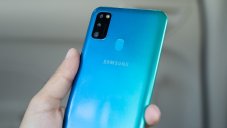
Review - Jan 19, 2020
Redmi Note 8 Pro vs Honor 9X vs Samsung Galaxy M30s: Very Hard Choice
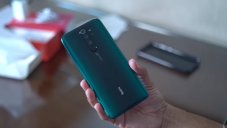
Mobile - Dec 27, 2019











